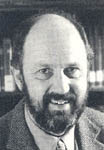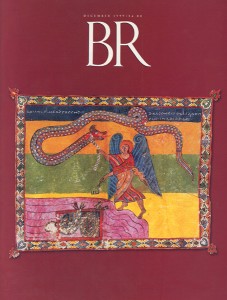A Return to Origins (Again)
The early Christian martyrs were not reading the apocryphal Gospel of Thomas or the hypothetical sayings source that scholars refer to as "Q." They were reading Matthew, Mark, Luke and John.

There is now a new myth of Christian origins. It feeds, as do many myths, off the weaknesses of its supposed alternatives.
There were (and probably still are) two classic accounts of Christian origins:
In the Catholic version, Jesus taught true religion; the apostles (especially Peter) went on teaching it; and the task of the church thereafter was to stick close to Peter, hence to Jesus, hence to God. Occasional heresies shoot off into darkness, leaving the straight and narrow line of light and life.
In the Protestant version, Jesus, the apostles and the early church fathers taught true theology; the medieval church muddled it up with priestcraft, masses for the dead and other pagan mumbo jumbo; Luther and others rediscovered the biblical (and Patristic) truth. Not a straight line, perhaps, but quite a simple story: 500 good years, 1,000 bad years and then the Great Light.
The Protestant scheme was then modified. Some Enlightenment thinkers extended the “bad” period in both directions: Only the first generation got it right (including some, but not all, of the New Testament); the Reformation was a false dawn; and only with the Enlightenment did the true message of Jesus strike home. That gives us 100 good years, 1,600 bad ones, and now a different Great Light.
A crucial variation emerged from 19th-century Romanticism. What matters is the primal vision; the molten lava of original inspiration quickly flows into the cooling rock of institutions and formulas. The New Testament, though itself part of the cooling process, matters because it points back to that primal moment. Early is good, late is bad.
Already a library member? Log in here.
Institution user? Log in with your IP address.

